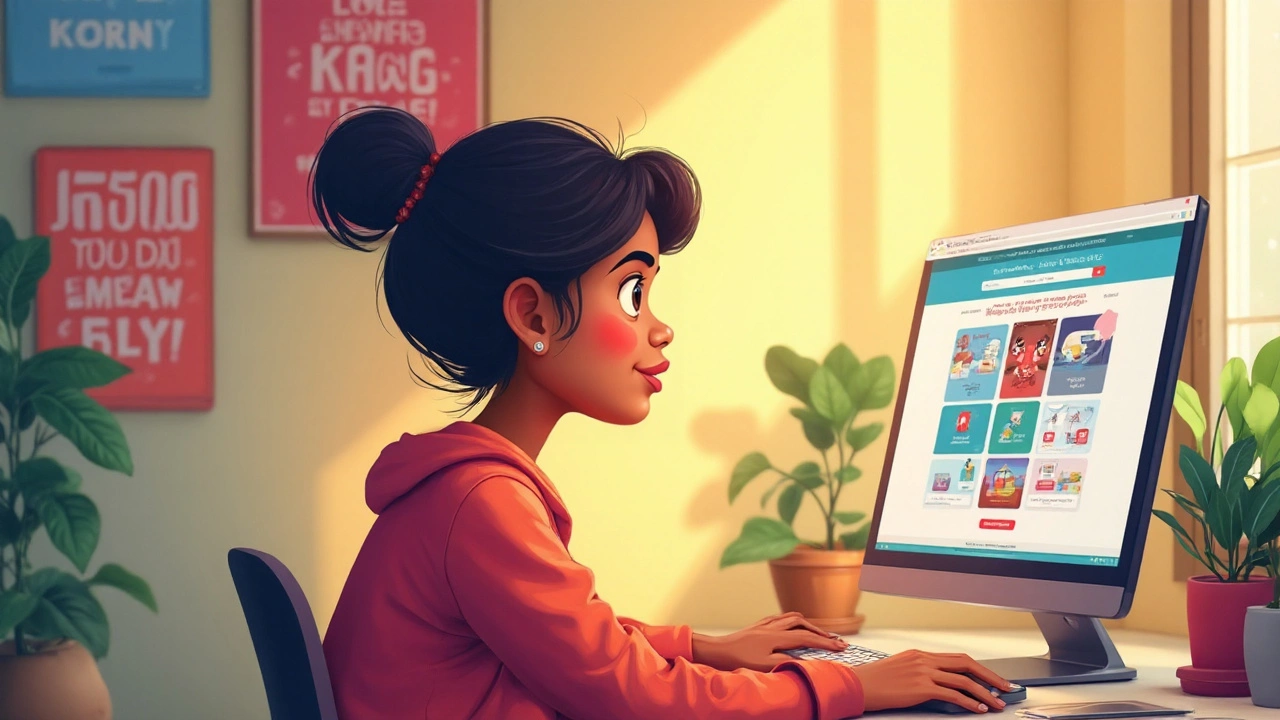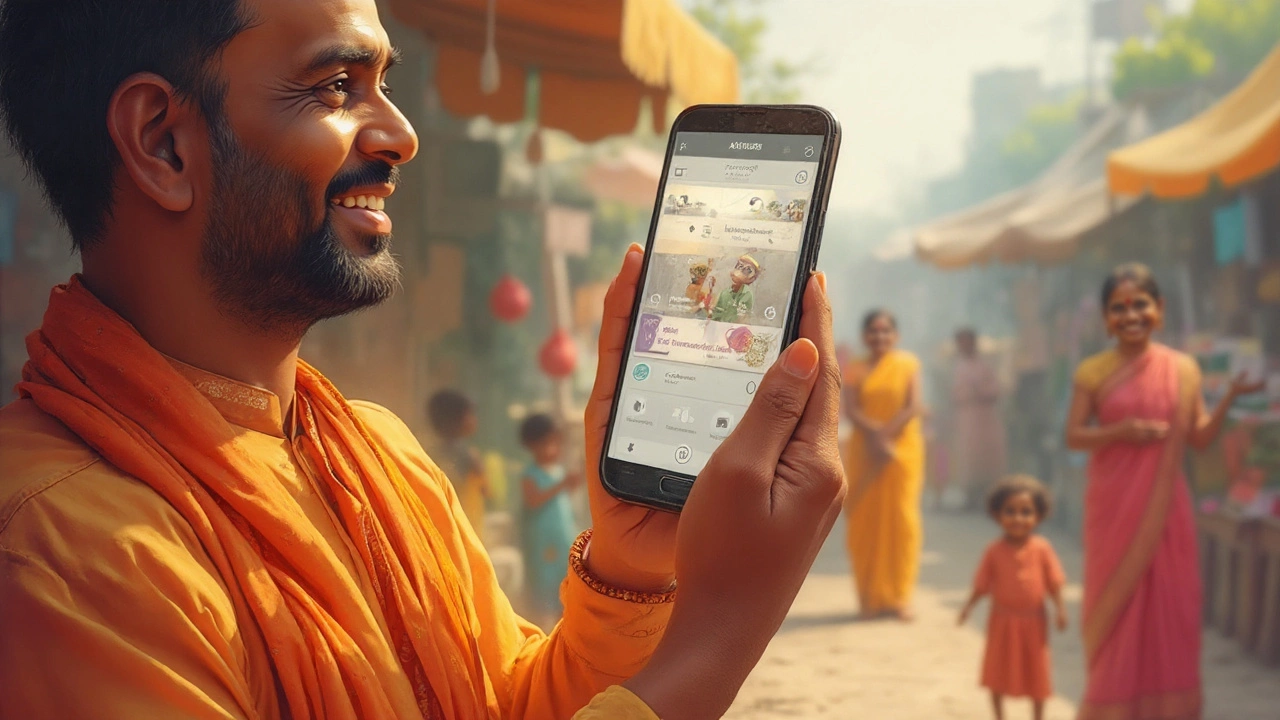Think you need a fat wallet to have a website that looks sharp and works like a charm? That's a myth still hanging around in 2025, but the game has totally changed. All it takes now is a laptop (or even a phone), a tiny bit of curiosity, and a free afternoon. If you can tap out a message to a friend, you can launch your site into the world—without paying a single rupee, dollar, or pound.
More than 74% of small businesses and solo creators started their websites on free platforms over the last three years. Instagram brands, homemade chutney shops, tutoring services, and travel photographers all kick off their online journeys at almost zero cost. And it gets even better: the world of free website builders has exploded with options, from drag-and-drop giants like Wix and Weebly to slick, blog-first favorites like WordPress.com. So, the real question isn’t whether you can make a website for free (you can, easily)—it’s which tool and tricks will make your site stand out for all the right reasons.
The Different Ways You Can Build a Website for Free
You’ll find two main routes if you want to make a free website. First, there are the all-in-one 'website builders'—platforms that give you ready-made templates and built-in hosting, and walk you through publishing, usually with your choice of colors, fonts, sections, and images. Second, you have open-source content management systems (CMS) like WordPress.org, where the software is technically free but hosting and domain might cost you, unless you use a special workaround or promo deal. But let’s stay focused on true "no payment, no problem" stuff.
Most people jump on the website builder train. You get a blank canvas, drag-and-drop tools, and libraries of stock images or fonts. Platforms like Wix (238 million users by 2025) make it feel like a video game for grownups. WordPress.com, despite feeling a bit more old-school, powers over 43% of the public web and has a shockingly generous free tier for anyone who just wants a basic blog or simple business card site.
On the lighter end, you’ve got Google Sites—super simple, dead easy, and perfect if you just want to slap together a quick info page, resume, or classroom project. Then there’s Carrd, where one page is the limit, but the design freedom blows away expectations. Bloggers crossing over from Tumblr or Medium also get handy website-like spaces without a penny spent, though their customization has some limits.
What do all these have in common? No coding required, decent options for templates and design, and instant live publishing with a built-in free subdomain. Here comes the practical stuff: what’s the easiest, what’s the slickest, and what makes the most sense for the type of site you want?
- Wix: Best for anyone who likes drag-and-drop, visuals, and lots of design options. Free users get a wixsite.com subdomain.
- WordPress.com: Best for blogs, portfolios, and content-heavy sites. The free plan gets you online with a wordpress.com add-on.
- Weebly: User-friendly, reliable, great for small business and class projects. You’ll publish at weebly.com.
- Google Sites: Zero learning curve—just pick a template and click "publish." Uses your Google account and gives a sites.google.com URL.
- Carrd: Minimalist 'one-page' websites, extremely fast setup, especially good for portfolios or personal cards.
Just remember, "free" platforms do stick their brand in your URL. Think mysite.wixsite.com or yourproject.weebly.com. You get what you pay for, but until you’re ready for your own custom domain, this setup works just fine for a personal project, starter portfolio, or a small online store waiting to grow.
What’s the Real Catch With Free Website Builders?
If something sounds too good to be true... you know the rest. Yes, you can have a beautiful live website, but here’s the nitty-gritty: free website builders always come with trade-offs. For one, your site will run on a shared domain—that means your web address will include the builder’s brand (eg. make a website for free with wixsite.com/yourname). Not a dealbreaker for hobbies or school projects, but it sometimes looks less pro for a business or freelancer hunting for clients.
The next catch: you’ll see ads placed by the builder on your pages. Not a ton of them, but enough to remind your visitors, “Hey, your friend’s site rides for free.” Wix and Weebly stick their banners at the top or bottom. WordPress.com goes lighter and less intrusive, but your site still serves up their ad network.
Now about features: on any free plan, you’ll get basic tools—text, images, a contact form if you’re lucky. But advanced stuff (like fancy online stores, custom plugins, advanced SEO, or email sign-ups) usually costs money. Want to run a serious e-commerce store? Most pros shell out for the paid version—free is just the appetizer.
There are also limits on storage and bandwidth. If you upload tons of images, videos, or your page goes viral, these caps kick in fast. Wix’s free plan comes with 500MB storage and 500MB bandwidth per month, which is plenty for a digital resume or writer’s blog, but too little for most businesses or travel photo galleries. See what I mean in this real-world comparison:
| Platform | Free Storage Limit | Free Bandwidth | Custom Domain Support | Ads? |
|---|---|---|---|---|
| Wix | 500MB | 500MB/month | Paid Only | Yes |
| WordPress.com | 1GB | Unlimited | Paid Only | Yes |
| Weebly | 500MB | Unlimited | Paid Only | Yes |
| Google Sites | Unlimited (uses Google Drive) | Unlimited | No (must share as Google Site) | No |
| Carrd | Unlimited (simple sites) | Unlimited | Paid Only | No |
Biggest tip? Use these free platforms to build, experiment, and polish your ideas. When your project gets real traction, or you need more control, look at their paid tiers or migrate to a custom setup. Free gets you to launch day—it doesn’t limit your dreams.

Secret Advantages of Free Websites Most People Forget
Many assume a free website is just a poor cousin to a proper paid domain. But for hustlers and creatives, the free route packs hidden bonuses. First up, you get to test your ideas in the wild, with no pressure to profit right away. Let’s say you’re thinking about launching a dog-walking gig. Put up a free Weebly site, share it in WhatsApp groups, and see if you get any bites—literally or metaphorically. No risk, and you learn fast.
Second, it’s a playground for your web skills. Play around with colors, experiment with layouts, add images, mess up, and start over. You’re not shelling out for mistakes or second-guessing every move. The more you tinker, the better you get.
There’s also the “portfolio effect.” If you’re a designer, photographer, coach, or writer, free sites let you showcase your work without waiting for clients or job offers. Same if you’re a student—show off your school projects or resume for internships. I’ve seen entry-level folks land real gigs just by dropping a WordPress.com link on their LinkedIn page. Recruiters love seeing what you can do, not just reading about it.
Free websites are way lighter—and way safer—for “throwaway” experiments. Running an event for a weekend? Need a quick RSVP form for your wedding? Want to archive your poems or recipes before deciding if you’re the next Rupi Kaur? You can get all this done, and zap it off the internet tomorrow if you change your mind.
Since COVID-19, schools and local businesses worldwide have rushed online using these free platforms, making the web friendlier and more diverse. Some of the best indie newsletters in 2025? Built first on free WordPress.com setups or converted from basic Google Sites. That’s a wave nobody predicted five years ago.
How to Make Your Free Website Stand Out
So, you’ve signed up for Wix, Weebly, or WordPress.com, picked a template, and uploaded your favorite selfie. But now what? Truth is, most free websites look kinda same-y. The trick to standing out isn’t the price tag, it’s the sweat you put into the details.
Start with your own photos and words. Stock images look too... stocky. Snap pictures on your phone (lighting matters!), and skip the staged stuff. Write copy that sounds like you. Don’t copy-paste from templates or other sites. If you’re stuck, ask yourself: what would I want to know if I was visiting for the first time?
Next up, organization. Most people dump everything on the homepage, but your visitors get overwhelmed. Use simple navigation. Even one-page sites can have sections—About, Portfolio, Contact, and maybe Testimonials or FAQs if you’re offering a service. List your contact info clearly; don’t bury it three clicks deep.
If you blog, mix up your content. Include lists, how-tos, video embeds (YouTube is free), and image galleries. Use bold, short headlines and subheadings, so your readers can scan quickly. Mobile-friendly layouts aren’t just a nice extra—they’re essential. Over 68% of web traffic in India, for example, is mobile, and free site builders are good at handling this if you don’t mess much with the template structure.
For the best impression:
- Pick a color palette (use Canva or Coolors to generate matching colors and stay consistent)
- Limit your typefaces (2 is plenty; don’t go full circus)
- Resize your photos so your site loads fast (free tools like TinyPNG will help you out)
- Write your page titles and meta descriptions with Google search in mind—catchy, direct, and describing what you do
- Test every link before sharing—nobody likes a dead end
On a free platform, your biggest weapon is creativity, not money. Canva, Unsplash, and Google Fonts are all free resources to help your site punch above its weight. Head to YouTube for tutorials if you want slick effects or layout ideas—someone out there has shared exactly the tip you need.

When to Upgrade: Moving From Free to Your Own Custom Domain
There’s a magic moment with every project when you outgrow the basics. Maybe your side hustle is picking up steam, or you’re tired of seeing 'made with Wix' banners. A custom domain (like yourname.com) and the ability to ditch ads are the rewards for levelling up, but the main thing a paid upgrade gives you is trust. Visitors just take you more seriously when you have your own address and look pro.
Most leading website builders make upgrading dead simple. For example, Wix, Weebly, and WordPress.com let you pick a plan, connect your domain, and unlock extra storage, better analytics, and SEO perks. It isn’t expensive—expect to pay about ₹500-₹1200 per month in India (or $5-$15 globally) for the basic upgrades, with regular sales or bundles if you shop around.
Here’s where it helps to have started free. You already know what your audience wants, what content performs, and what your brand style really is. You can migrate your site or just upgrade in place, keeping your layout and tweaking all the extras.
Real-world example: Priya, a photographer from Pune, started with a free WordPress.com portfolio. When she landed her first client, she switched to a personal domain and added a booking calendar. Her site jumped in Google rankings and bookings doubled in a month. Free got her there, but it took a bit of investment to go pro.
Don’t rush the upgrade. Milk every benefit you can from the free side, polish your content, and upgrade when the time is right. There’s no shame in starting small—some of the world’s most memorable brands began with clunky free sites and funny URLs.
Bottom line: building a website for free? Completely possible. Just start, tweak as you go, and know that your online story can begin even with zero money down. The audience doesn’t care what you paid—they just want a good reason to come back.
